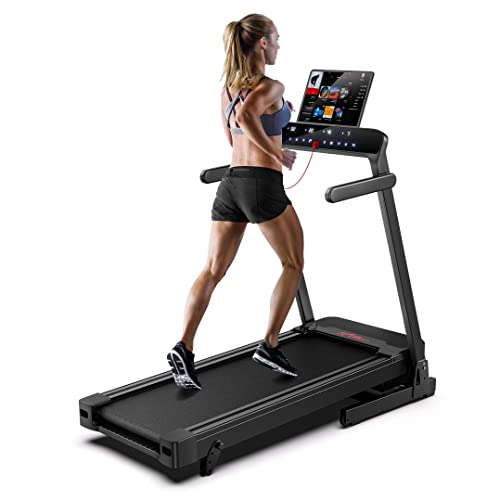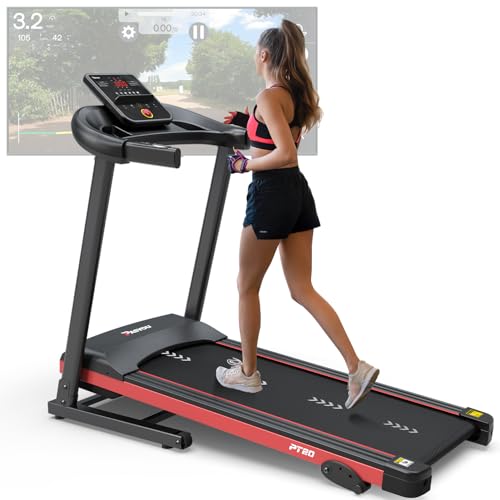You'll Never Be Able To Figure Out This Treadmill Incline Workout's Tr…
페이지 정보
작성자 Anne 댓글 0건 조회 7회 작성일 24-10-22 11:18본문
 How to Use a treadmill incline (just click the up coming post) Workout
How to Use a treadmill incline (just click the up coming post) WorkoutMany treadmills allow you to alter the incline. Walking at a higher incline simulates walking uphill and burns more calories than flat-walking.
 It is a low-impact training that can be an alternative to running for those who suffer from joint pain. It can be completed at a variety of speeds and is a breeze to alter based on the fitness goals.
It is a low-impact training that can be an alternative to running for those who suffer from joint pain. It can be completed at a variety of speeds and is a breeze to alter based on the fitness goals.Selecting the best slope
Whatever your level of fitness, whether you're a beginner on the treadmill or a seasoned pro, incline-training offers countless opportunities to spice up your cardio exercises. Adding incline on a treadmill helps simulate the feel of running outdoors without all the stress on your joints. You'll burn more calories, build endurance, strengthen your lower leg muscles, and increase your heart rate by increasing the intensity of your walks or runs. It is easy to include incline training into your cardio sessions as part of a HIIT or steady-state workout.
If you're walking on an incline, be sure you take longer steps and keep your arms pumping. A good rule of thumb is to tighten your arms when you're at an incline of 15 percent and relax them when you're at an incline of 1 percent. This will improve your walking posture and reduce the risk of injury. It is also important to be cautious about leaning too far forward when walking up an incline that is steeper because it could strain your back.
If you're new to treadmill incline exercises, it is a good idea for you to begin with a lower gradient. It's best to be able to comfortably walk for 30 minutes at a slow pace on flat ground before attempting any kind of incline. This will prevent injury and will allow for gradual growth in fitness.
The majority of treadmills allow you to set an slope while you're exercising. However, some treadmills incline do not allow you to change the incline manually, and you'll have to stop your exercise and manually adjust the treadmill's deck to the desired incline setting. This can be a pain particularly if you're performing an interval training program where the incline fluctuates every few minutes.
It's important to be aware of your HRmax when you're performing a HIIT workout. This will let you know when you've reached your desired intensity and that it's time to increase the incline or reduce the speed. If you're doing steady-state exercise it's important to keep track of your heart rate throughout the workout and keep it between 80-90% of maximum heart rate.
Warming up
Treadmill workouts are a great way of burning calories, but adding electric incline treadmill increases the intensity and provides additional benefits, such as functional strength training. If you're brand new to running or walking on an inclined surface it is crucial to warm up prior to increasing the intensity of your treadmill exercise. This will help to lower the risk of injury and prepare your muscles for the intense work ahead.
If you're a beginner to fitness, beginning your workout with two minutes of strenuous walking is the best method to start your warm-up. Once you've warmed up then you can begin walking for 4 to 5 minutes. You can continue to heat up your legs by adding two minutes of walking at a fast pace after your jog. You can then progress to a full-body circuit for example, one which incorporates bodyweight workouts such as squats and walking lunges.
A full-body workout is a great choice because it targets multiple muscles and helps build an energised core. This is a great way to raise your heart rate, without pushing too hard on the treadmill. Ask your fitness instructor for suggestions when you're unsure of the method to choose.
Include an incline to your treadmill workout. This will provide you with the most realistic exercise terrain and boost your VO2 Max, which is the maximum oxygen intake. Walking on an incline can prepare your muscles to walk over real-world terrain and reduce the stress on your knees.
Treadmill incline workouts can also target various leg muscles and are excellent to tone the lower body. Also, walking at an angle will improve the range of motion in your arms, and increase the strength of your shoulders and chest muscles.
A high-intensity treadmill workout is an excellent choice for those who are new to the sport and is suitable for those who wish to challenge themselves and achieve higher heart rates without the pressure of pushing their bodies to the limit. It is important to monitor your heart rate during a vigorous treadmill workout, and make sure to stretch afterward. Stretching can help relax tight muscles and will help to recover your body from the intense workout.
Intervals
You can vary the intensity of a treadmill incline exercise by using intervals. Interval training is a proven method to burn more calories and build muscle faster. It involves alternating periods of intense exercise with periods of less intensity exercises, like a jog or a light walk. This type of exercise will assist you in increasing the amount of oxygen you consume during exercise, also known as VO2 max.
To get the most value out of your treadmill incline workout, it is recommended to incorporate an equal amount of walking and jogging. This will allow your body to recover from intense workouts and prevent injury. Warm up prior to beginning the intervals.
The first step in determining a treadmill incline workout is to determine the desired heart rate. It should be in the range of 80-90 percent of the client's maximum heartbeat. You can then decide which slope and speed to apply to each interval.
You can utilize the built-in interval programs on your treadmill or design your own. You can, for example begin with a three-minute interval at an easy jog and gradually increase the speed. When you have reached your goal heart rate you can run comfortably for the remainder of the exercise.
Then, jog on an angle between 10 and 15 percent, and run for 3 to 6 repetitions. You can then return to jogging at a slow pace for about a minute. Repeat this sequence for five to eight intervals.
If you're uncomfortable running on a treadmill, you could attempt a running and walking in a incline on uneven ground. This will test your balance and work your leg muscles more than running on a treadmill. It's crucial to ensure your knees and ankles are free of any issues prior to beginning this type of workout.
You can also include dumbbell exercises in your incline workout to increase exercises to build muscle. You can, for example perform dumbbell rows as well as lateral raises during your rest intervals in order to make your exercise more challenging.
Recovery
Most treadmills come with an incline feature that allows you to simulate walking and running uphill. You can adjust the slope to make your workout more challenging, or add intervals with greater intensity. This type of exercise is ideal for those who want to increase their cardio and burn calories without having to worry about the impact on their joints.
This exercise works different muscles throughout the body, which helps to increase the amount of calories burned. This can strengthen the posterior chain that includes the glutes, hamstrings and calf muscles. Inline treadmill walking also exercises the muscles that form the calves, such as the smaller tibialis and peroneal anterior muscles. This increases strength and flexibility, and is a good alternative to jogging if aren't comfortable with high-impact exercises.
If you're just beginning to learn about incline walking, start out by walking at a moderate incline, and gradually increase it over time. This will reduce joint pain and allow you to achieve your fitness goals quicker. It is important to listen to your body and stop exercising if you experience pain or discomfort.
Start by jogging at a moderate upward or level walking for five minutes to get the most from your incline exercise. Make sure to keep an eye at your heart rate throughout the workout.
After your first incline interval, reduce the slope to zero and walk at a fast pace for 3-4 minutes. This recovery phase helps you get your heart rate back to normal and prepares your body to the next step.
Repeat this process for the remainder of your training on an incline. Try to keep the work-to-rest ratio as close to 1:1 as you can. This will allow you to increase the intensity of your workout, and also achieve your desired results in a shorter amount of time. Stretch your muscles after a workout to prevent tight muscles and issues with flexibility.
댓글목록
등록된 댓글이 없습니다.